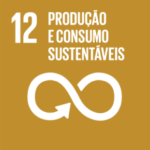
Lego. Workers’ bonuses depend on their carbon emissions
Lego’s strategy will reward employees for contributing to the Group’s sustainability objectives as of this year. The LEGO Group has announced that a percentage of
We didn't find any happenings mapped to your criteria.
Try the traditional search to find articles not yet mapped with RUA.
We didn't find any happenings mapped to your criteria.
Try the traditional search to find articles not yet mapped with RUA.
We didn't find any happenings mapped to your criteria.
Try the traditional search to find articles not yet mapped with RUA.
We didn't find any happenings mapped to your criteria.
Try the traditional search to find articles not yet mapped with RUA.
The LEGO Group aims to manufacture products from 100% renewable and recycled materials by 2032, having already tested more than 600 different alternative materials.
After abandoning the plan to make parts from 100% recycled bottles due to cost and production problems last year, LEGO now plans to produce half of its plastic from renewable or recycled materials by 2026.
The company hopes to reduce the fossil fuel-based plastic it uses in its parts, paying up to 70% more for certified renewable resin to encourage production. Currently, 22% of the material is not produced from fossil fuels.
In the long term, the manufacturer plans to switch entirely to renewable and recycled plastic by 2032, while maintaining the same level of durability, safety and consistency. The company has already tested more than 600 alternative materials, including cooking oil, waste fat from the food industry and various recycled materials, such as bio-PE – used to make more than 200 different botanical elements and Minifigure accessories – and a new material called arMABS, produced from recycled artificial marble and found in more than 500 transparent LEGO elements.
However, these costs could be two or three times higher, as the market is still developing.
Last year, LEGO pledged to triple its investment in sustainability to 3 billion dollars a year by 2025, while promising not to increase the price of its products. “So far, we’ve decided that we’re going to bear the burden and [o custo extra] comes out of our bottom line. We’re not sure that consumers are willing to pay,” LEGO CEO Niels Christiansen explained to The Guardian.
According to Christiansen, the investment aims to “try to force the industry to develop” and “change the supply chain” by increasing demand. In this way, the CEO hopes to promote the development of new or cheaper materials that will help LEGO reach its 2032 target.
Last month, the company launched a campaign to encourage families to pass on their LEGO pieces from generation to generation, avoiding waste.
“LEGO bricks are designed to be used over and over again – and we want our fans to keep them in play by passing them on when they’re no longer in use. The lasting value of LEGO bricks is intrinsically linked to our commitment to sustainability. By designing bricks that last for generations, we aim to inspire endless creativity and prevent LEGO bricks from becoming waste. And as well as encouraging fans to keep the pieces in play, we continue to explore more ways to reuse them through our take-back initiatives,” says Annette Stube, Director of Sustainability, in a statement.
Earlier this year, LEGO expanded its LEGO Replay take-back program to the United Kingdom and continued to test similar models in the United States and Europe.
The introduction of paper-based pre-packed bags and the development of a material called ePOM, which mixes renewable energy and carbon dioxide from bio-waste, are also part of the efforts to make LEGO products more sustainable.
In 2023, the LEGO Group increased spending on environmental initiatives by 60% compared to the previous year and by 2025 it plans to double its annual investment compared to 2023. The company’s goal is to reduce greenhouse gas emissions by 37% by 2032 (compared to 2019) and achieve net zero emissions by 2050.


Lego’s strategy will reward employees for contributing to the Group’s sustainability objectives as of this year. The LEGO Group has announced that a percentage of

After two years of testing, Lego has concluded that the new material made from recycled bottles is more polluting. In 2021, Lego announced that it

This article promotes an action that encourages the reduction of waste generation through prevention, reduction, recycling, and reuse.
➡️ To discover more businesses that are aligned with Sustainable Development Goal 12 “Sustainable Production and Consumption” click here.
➡️ For news, tips and interviews about this topic, click here.
➡️ Want to know more about the 17 United Nations Sustainable Development Goals? Click here
Esta publicação também está disponível em:
![]() Português (Portuguese (Portugal))
Português (Portuguese (Portugal))

